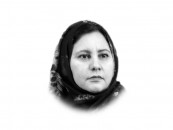BRICS: emergence of polycentric, multimodal harmonic world

Two global events in less than seven days representing two different global outlooks concluded in the first half of June 2024. The G7 Summit in Italy had heads of state of the United States, Canada, Germany, France, Italy, Canada and Britain, while the chiefs of the European Council and the European Commission attended the meeting between 13 June– 15 June 2024. The Summit ended by re-emphasising the protectionist approach of protecting economic interests against the alleged Chinese meddling with global markets and the continued support for the sinking ship of Ukraine. The key elements that signify unity among G7 members are sanctions against Russia and containment of China.
On the other hand, the BRICS meeting of foreign ministers took place between 10–11 June 2024 in Russia and unveiled the agenda of the forthcoming BRICS heads of state meeting in October that would decide on a new banking system and around 20 other initiatives for supporting health sector, economy, transport, tourism, trade, industrial collaboration and others. The year 2024 can be considered the year of BRICS, as a series of events planned in 2024, and will continue till the Head of State Summit, which will take place on 22–24 October 2024 in Russia. Though statements released after the foreign ministers meeting encompassed important global issues like the Ukraine conflict and Gaza, at the same time it avoided indulging in global political conflicts. Nonetheless, the western media stated that BRICS is enhancing the ‘North-South divide’ and pitching its global narrative, which is in contradiction with a western global viewpoint. During the first decade of the 21st century, the buzzword was ‘clash of civilizations’ and now the expression of ‘divide’ has taken its place. Everybody knows that the North has different roots of civilization than the South, thereby the narrative is the same but with new phraseologies and with new presumed enemies.
The emergence of the Global South is painted as ‘something serious’ and ‘needs immediate response from the Global North.’ Against this backdrop, Saudi’s denial of renewal of the Saudi-US oil deal is seen as an ‘act of defiance’ to the Global North. The deal expired on June 9, 2024 but both parties are still negotiating to find some way forward. Originally signed on 8 June 1974, the deal established two joint commissions: one based on economic cooperation and the other on Saudi Arabia’s military needs. This deal introduced a new diction of ‘petrodollar,’ and now Saudi Arabia regrets renewing the deal so it could sell oil in other currencies also, rather than only in US dollars. Now, the western media claims that global diversification is threatening the Westernisation of global politics as well as the Western economies, although in reality new morphology of the new emerging world order extensively used in BRICS summits are Poly-centric, Multi Modal and Multipolar Harmonic World.
I think that old-styled Western thinkers must accept changing scenarios and forget the historical context where the border West was inevitable, as much has changed since then and the world looks altogether different from the post-Cold War era. The West has long maintained its hegemony but due to their overconfidence they made irreversible errors, the list is extensive but the withdrawal of allied forces from Afghanistan, the forthcoming defeat in Ukraine, and the tarnished reputation as a result of relentless support for Israel, should be considered reality checks instead of pitching the Global South as a rival. Independent voices within media promote the idea that a pluralistic overview of IRs is needed as empirical case studies show how concepts and theories are changing. The dollar is no more the only option as euros, yen and yuan are replacing it. Additionally, the potential use of digital currencies may also be a reality soon. In the BRICS meeting that took place in June, leaders discussed the idea of “unit,” a unique currency model that will allow individuals and countries to trade in units. The structure of the trade via unit is not disclosed yet, however, the plan can open new trade venues by ignoring the US dollar. Today, it is Saudi Arabia and tomorrow it can be any country that can find its way out of dollarisation.
Founded in 2006, BRICS now has three out of five nuclear powers and two out of five veto powers that are offering a ‘real free market economy’ ¬ free from the US dollar as well as US economic sanctions. China, India, Brazil, South Africa and Russia brought BRICS as an option for the weaker global players and Egypt, Iran, the UAE, Saudi Arabia and Ethiopia joined them while Bahrain, Belarus, Venezuela, Kazakhstan, Cuba, Laos, Mauritania, Thailand, Turkey and Sri Lanka are waiting for their full membership.
The catch in BRICS is that it is not a bloc formation of the Global South as style vintage monopoly used to be, so Europe is welcome to join provided it is ready to be treated equally because BRICS is a high-speed train on route to create a polycentric, multimodal harmonic world. This means that the Western tradition of expansionism has no space in it and has therefore left the West with two choices: either to continue becoming irrelevant for the global majority or to accept polycentricity of the new world order.
















COMMENTS
Comments are moderated and generally will be posted if they are on-topic and not abusive.
For more information, please see our Comments FAQ